
34 Circe is a large, very dark main-belt asteroid. It was discovered by French astronomer J. Chacornac on April 6, 1855, and named after Circe, the bewitching queen of Aeaea island in Greek mythology.

74 Galatea is a large C-type main-belt asteroid. Its carbonaceous surface is very dark in color with an albedo of just 0.034. Galatea was found by the prolific comet discoverer Ernst Tempel on August 29, 1862, in Marseilles, France. It was his third asteroid discovery. It is named after one of the two Galateas in Greek mythology. A stellar occultation by Galatea was observed on September 8, 1987. The name Galatea has also been given to one of Neptune's satellites.
126 Velleda is a main-belt asteroid. It is probably a rather typical, albeit sizable, S-type asteroid. Named for Veleda, a priestess and prophet of the Germanic tribe of the Bructeri. It was discovered by Paul Henry on November 5, 1872, in Paris, France. It was his first credited discovery. He and his brother Prosper Henry discovered a total of 14 asteroids.

165 Loreley is a main-belt asteroid that was discovered by C. H. F. Peters on August 9, 1876, in Clinton, New York and named after the Lorelei, a figure in German folklore.
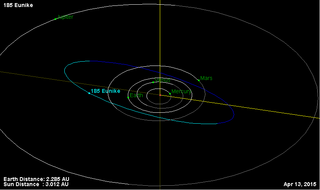
185 Eunike is a dark and very large main-belt asteroid, with an approximate diameter of 157 kilometres. It has a primitive carbonaceous composition.
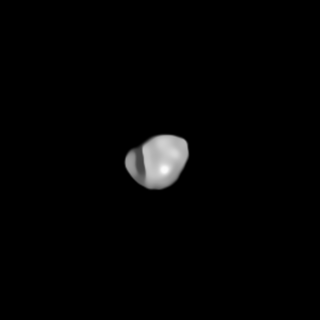
187 Lamberta is a main-belt asteroid that was discovered by Corsican-born French astronomer Jérôme Eugène Coggia on April 11, 1878, and named after the astronomer Johann Heinrich Lambert. It was the second of Coggia's five asteroid discoveries.

189 Phthia is a bright-coloured, rocky main belt asteroid that was discovered by German-American astronomer Christian Heinrich Friedrich Peters on September 9, 1878 in Clinton, New York and named after Phthia, a region of Ancient Greece.
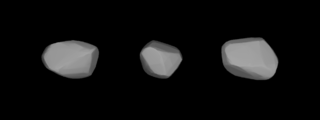
516 Amherstia was the 8th asteroid discovered by Raymond Smith Dugan, and was named after Amherst College, his alma mater. Amherstia is a large M-type main belt asteroid, with an estimated diameter of 73 km. It follows an eccentric orbit between Jupiter and Mars, with an orbital period of 4.39 years. The orbital plane is inclined at an angle of 13° to the ecliptic.
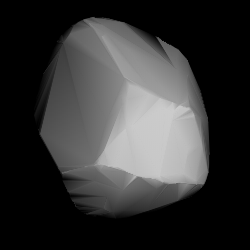
217 Eudora is a large Main belt asteroid. It was discovered by French (Corsican) astronomer J. Coggia on August 30, 1880, in Marseilles, France. It was his fourth asteroid discovery and is named after Eudora, a Hyad in Greek mythology.
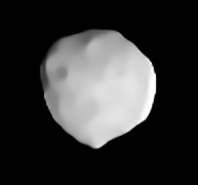
324 Bamberga is one of the largest asteroids in the asteroid belt. It was discovered by Johann Palisa on 25 February 1892 in Vienna. It is one of the top-20 largest asteroids in the asteroid belt. Apart from the near-Earth asteroid Eros, it was the last asteroid which is ever easily visible with binoculars to be discovered.
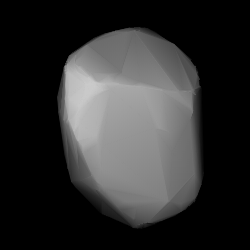
328 Gudrun is a main-belt asteroid.

354 Eleonora is a large, stony main-belt asteroid that was discovered by the French astronomer Auguste Charlois on January 17, 1893, in Nice.

381 Myrrha is a main-belt asteroid that was discovered by the French astronomer Auguste Charlois on January 10, 1894, in Nice. It has been classified as a C-type asteroid and is most likely composed of carbonaceous material.
419 Aurelia is a main-belt asteroid that was discovered by German astronomer Max Wolf on September 7, 1896, in Heidelberg. It is classified as an F-type asteroid.
451 Patientia is approximately the 15th-largest asteroid in the asteroid belt with a diameter of 225 km. It was discovered by French astronomer Auguste Charlois on 4 December 1899, and assigned a provisional designation 1899 EY.
469 Argentina is an asteroid that was discovered by Luigi Carnera on 20 February 1901. Its provisional name was 1901 GE. 469 Argentina has an estimated rotation period of 12.3 hours.
481 Emita is a minor planet orbiting the Sun that was discovered by the Italian astronomer Luigi Carnera on February 12, 1902. The meaning of the asteroid's proper name remains unknown.
536 Merapi is a main belt asteroid orbiting the Sun. It was discovered by American astronomer George Henry Peters on May 11, 1904, from Washington, D.C.

665 Sabine is a minor planet orbiting the Sun that was discovered by German astronomer Wilhelm Lorenz on July 22, 1908.
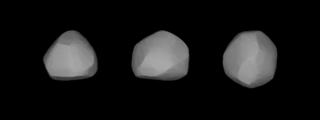
747 Winchester is an asteroid, a minor planet orbiting the Sun. It was discovered in 1913, and is named after the town in which it was discovered, Winchester, Massachusetts, in the USA.














